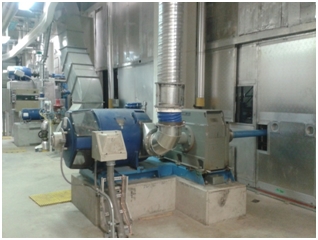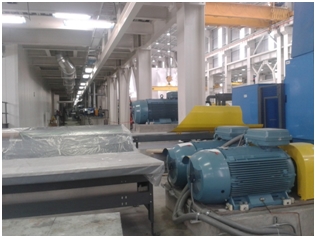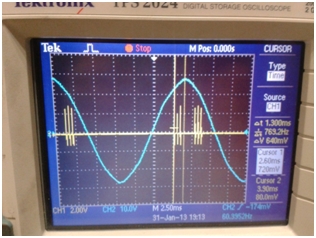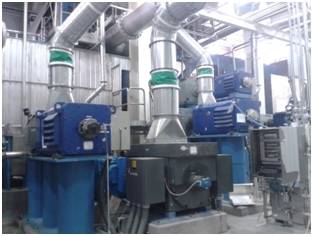Home › Electrical Engineering Forum › General Discussion › Motors and Drives: AC or DC?
- This topic has 0 replies, 1 voice, and was last updated 8 years, 1 month ago by
admin.
-
AuthorPosts
-
2016/03/24 at 12:26 pm #11299
admin
KeymasterToday we’re so glad to present you a new member of our community: D. Ros who surprised us with a very interesting article about motors and drives. His pont of view is what seduced us the most and we hope he will send us more articles in the future!
If you too want to publish on the Electrical Engineering Community blog, just send a mail. We’ll be glad to publish your works, career stories, testimonies, debates and other types of articles about the topic you want.
The end of the DC motors era
[caption id="attachment_10004" align="alignright" width="318"]
Figure 1: Revamped DC Motors driving a paper machine[/caption]
Due to their reliability and precise variable speed control, direct current (DC) motors have long reigned as the workhorse of industrial applications.
However increases in quality and productivity requirements of modern manufacturing processes plead for motors and drives for an upgrade that can cope with higher demands and narrower tolerances.
Since most of the DC motors’ drives in service were installed decades ago, their analog control technology has fallen short to meet these new precision demands, besides due to commutators, DC motors are not suitable for very high speed applications.
The rise of AC motors
[caption id="attachment_10008" align="alignright" width="316"]
Figure 2: New Paper Winding machine driven by AC motors[/caption]
With the imminent advent of digital technology to electrical motor Drives, advances in microprocessors, solid-state electronics and AC motor control algorithms (vector control) have lead AC drives to gradually take over the revamp of many applications once only addressable by DC drives.
Moreover, as DC motors are expensive to purchase and maintain, AC motors have been now established as the preferred choice for most new applications, slowly driving DC technology out of market and therefore out of development too.
A sustainable alternative
Spite the reasonable phase out trend of DC drives technology, the engineering niche of electrical retrofitting has significantly grown. This retrofitting trend puts forward an interesting approach where costs are considerably cut down by reusing the existing DC motors and most of the power electronics in their drives.
[caption id="attachment_10011" align="aligncenter" width="240"]
Figure 3: SCR Rectifier Bridge of a DC Drive[/caption]
Thus, since DC machines have proven to be long-lived, by just upgrading the analog control into a digital Front End, the retrofit harnesses the best of DC technology; some of the currently operating DC motors are close to be almost a half century old and have been retrofitted and reused to serve diverse industries in their lifetime.
Resisting evolution
[caption id="attachment_10017" align="alignright" width="316"]
Figure 4: Oscilloscope trend of SCR’s gate trigger pulses and AC Line of DC Drive[/caption]
This electrical retrofitting challenges electrical professionals to push their expertise to its limit in order to achieve minimum process downtime while performing the upgrade.
But in the other hand it relieves them from spending in new equipment and as well from the need to acquire new knowledge and experience over the AC drive technologies.
But is retrofitting DC drives resisting a necessary modernization or is it promoting a sustainable solution to the increasing demands of an intensively growing demand for productivity and quality?
Energy usage inefficiency of outdated technology
Even though reusing DC motors can presumably be a sustainable pursuit, these electrical machines’ power factor ranges from 0.5 to 0.85, while AC motors can do up to 0.95 over their entire speed range.
So depending on the nature of the application, upgrading into DC or AC technology, in the long run can produce completely varied results in terms of energy consumption efficiency and thus cost.
The bottom line
Both DC and AC drives can address the new demands of manufacturing industries. However, rather than automatically going down for the trending technology, which most debates lean for AC, proper analysis should be done per application to weigh the advantages and disadvantages of using either technology. Nonetheless, DC motors and drives are not, and will not any soon become, obsolete.
[caption id="attachment_10018" align="aligncenter" width="313"]
Figure 5: Paper machine driven by a mix of DC and AC motors[/caption]
I thank the whole community for reading,
D.Ros.Very interesting way of dealing with this AC and DC drives topic which has been discussed so many time in the past. What do you all think of D.Ros point of view?
-
AuthorPosts
- You must be logged in to reply to this topic.
 Today we’re so glad to present you a new member of our community: D. Ros who surprised us with a very interesting article about motors and drives. His pont of view is what seduced us the most and we hope he will send us more articles in the future!
Today we’re so glad to present you a new member of our community: D. Ros who surprised us with a very interesting article about motors and drives. His pont of view is what seduced us the most and we hope he will send us more articles in the future! Figure 1: Revamped DC Motors driving a paper machine[/caption]
Figure 1: Revamped DC Motors driving a paper machine[/caption] Figure 2: New Paper Winding machine driven by AC motors[/caption]
Figure 2: New Paper Winding machine driven by AC motors[/caption] Figure 3: SCR Rectifier Bridge of a DC Drive[/caption]
Figure 3: SCR Rectifier Bridge of a DC Drive[/caption] Figure 4: Oscilloscope trend of SCR’s gate trigger pulses and AC Line of DC Drive[/caption]
Figure 4: Oscilloscope trend of SCR’s gate trigger pulses and AC Line of DC Drive[/caption] Figure 5: Paper machine driven by a mix of DC and AC motors[/caption]
Figure 5: Paper machine driven by a mix of DC and AC motors[/caption]